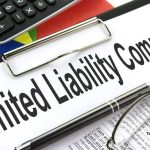Impact of Business Publications on Corporate Strategy Development
Business publications play a crucial role in shaping corporate strategy development by providing valuable insights, trends, and perspectives that inform decision-making and drive business innovation. In today’s fast-paced and competitive business environment, staying informed about industry developments and market dynamics is essential for organizations to maintain a competitive edge and adapt to changing landscapes. Let’s explore the impact of business publications on corporate strategy development and how they influence organizational growth and success.
1. Market Intelligence and Insights
Business publications serve as a primary source of market intelligence and insights for organizations seeking to understand industry trends, consumer behavior, and competitive dynamics. By reading industry-specific publications, business leaders can gain valuable insights into emerging opportunities, threats, and challenges that may impact their strategic decision-making processes. These insights help organizations anticipate market shifts, identify new growth areas, and develop innovative strategies to capitalize on market trends effectively.













